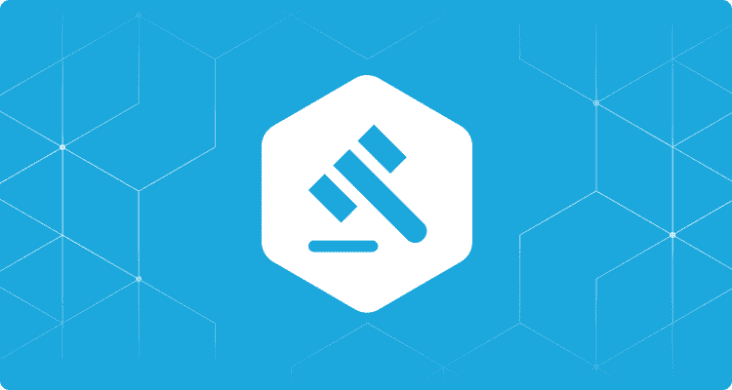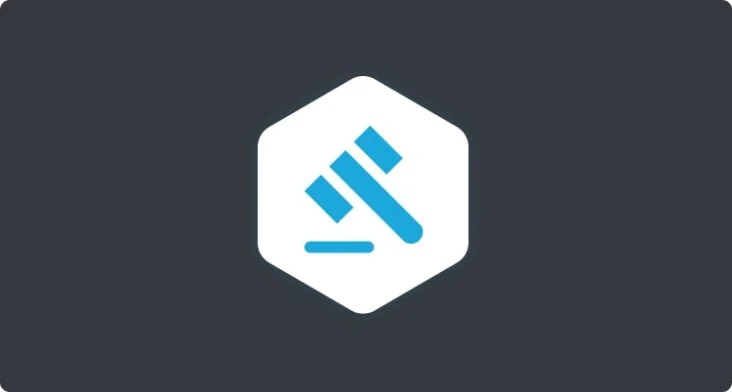Suppose you own a luxury car. You wouldn’t just give its keys to anyone who asks, right? In fact, you would give your car keys to only those you absolutely trust and, most importantly, have the right reason to drive your car.
Data access governance operates in the same manner. It is the process of controlling and ensuring that only the right individuals can access your organization’s sensitive data for legitimate purposes. Just like you wouldn’t just hand over your car keys to anyone, an organization must carefully manage access to its data and put guardrails around it.
According to a report, unauthorized access was the major contributor to 43% of all data breaches globally in 2020. This statistic highlights the significance of a robust data access governance process, especially in an era where data exists in distributed systems and applications spanning multi-cloud environments.
Read on as we dive into the fundamental concept of data access governance, why it is essential, and the challenges organizations face in implementing it.
What is Data Access Governance?
In an organization, employees can access sensitive data through many routes. They can access data via an application’s interface or in self-service scenarios, they can access directly on data lakes or data warehouses. Similarly, in streaming environments, data consumers can access data in transit via streaming Topics, often without any authorization.
Data Access Governance (DAG) is a set of processes that organizations enforce to manage and control users’ access to corporate data, be it sensitive data, data at rest, or data in motion. DAG allows organizations to analyze, manage, and protect data via access control policies, making its access exclusive to trusted individuals. It further helps security teams establish permission policies based on their organizational roles and responsibilities.
However, establishing DAG is easier said than done. Many challenges arise when developing and implementing a DAG strategy in organizations with distributed data systems and a massive data landscape, such as multi-cloud infrastructures.
Top Challenges Hindering Implementation of Effective Access Governance
According to a survey, 76% of organizations globally and 90% of large organizations leverage multi-cloud infrastructures. Multi-cloud environments open many opportunities for organizations, enabling them to reduce costs, speed up deployments, and expand their global footprint.
But, multi-cloud environments have inherent complexities since every cloud service provider has distinct features, controls, and limitations. Apart from multi-cloud complexities, the ever-growing volume of data and the breadth of systems where the data exist make it difficult to identify, catalog, and manage access to sensitive data.
Insufficient Insights into Sensitive Data Access
One of the key challenges organizations face in managing effective access controls around their data systems, applications, and the data itself is the lack of granular insights. Cloud-native identity access management (IAM) tools, although allow teams to discover and establish access policies around the data systems, they lack sensitive data context.
Without knowing what type of sensitive data resides in a system, one cannot determine what security, privacy, and compliance restrictions apply to the data. Without this context, it is challenging for organizations to decide who should have what level of access to the data system or the different data elements inside it.
Without the aforementioned insights, access governance teams fail to gain visibility of who’s accessing sensitive data, from which geographies they are accessing it, or how the data is being used.
Lack of Sensitive Data Mapping with Global Regulations
Compliance with data privacy and protection regulations is one of the core responsibilities of organizations globally. Organizations need to comply with regulations to safeguard themselves against regulatory fines and protect customers’ privacy and ensure customer trust.
However, it is often difficult for organizations to interpret complex global regulations due to a lack of deep legal insights. Organizations need a central place to understand what regulations apply and, thus, what access controls they should implement to stay in line with those regulations. Doing so manually and without comprehensive legal knowledge of each regulation is difficult.
Excessive Privilege Access
The complex nature of a multi-cloud infrastructure makes it challenging for access governance teams to manage effective access controls and ensure that users have the lowest-level access to data or resources to perform their tasks.
Similarly, every cloud service provider provides different access management configurations or tools. These tools have certain limitations that make it difficult for organizations to view their access policies under one roof comprehensively. Human error is yet another concern when it comes to excessive privilege access. For instance, if an identity with admin privileges is exposed in a security incident, the attacker would have the same level of access to view, modify, and even steal sensitive data, leading to a serious data breach incident.
These primary concerns for multi-cloud organizations hinder their ability to implement a Principle of Least Privilege (POLP) access model.
Missed Opportunities Due to Lack of Data Sharing
Organizations have varying obligations around data regarding compliance, security, privacy, and governance. They have to ensure that the data is well protected, used appropriately, and shared securely. It is because of those obligations organizations tend to block access to their data when moving to the cloud. Most of that data also contains valuable information that businesses might require sharing externally with business partners.
Since organizations don’t have a complete picture of their data landscape or what sensitive data exist and how it is shared, they cannot place effective security controls around it or securely share it among internal teams and external business partners while keeping sensitive data access restricted.
Another problem that keeps organizations from broadly sharing data across teams is that they do not have a consistent solution for easily masking sensitive data. Data masking is crucial for data sharing as it helps protect sensitive information against unauthorized access while allowing it to be shared with business partners or vendors for specific purposes. Numerous data platforms provide native data masking functionality. But, there is difficulty in utilizing the process efficiently and at scale to protect sensitive data. The manual process of identifying sensitive data and then applying masking makes it difficult for organizations to leverage data masking controls at scale that are consistent across cloud environments.
Manual Access Control Management
Most organizations have to undergo the laborious process of granting and revoking access rights to specific roles or users on a table, column, or row level in structured datasets. Needless to say, an organization may have huge volumes of structured data in a myriad of data assets or applications across different cloud services. Similarly, a single dataset might be accessible by many roles and users. Without complete insights into the sensitive data landscape, users, roles, permissions, and access policies, teams cannot automate access controls and are left with manual data access governance, which is error-prone and inefficient.
Benefits of a Robust DAG Strategy
As organizations globally embrace a multi-cloud strategy, identifying existing access policies and enhancing access controls over sensitive data across the environment becomes essential. There are several other equally important reasons why organizations need a robust data access governance strategy, such as:
- Organizations tend to face a diverse, strict, and ever-evolving regulatory landscape when shifting to the cloud or multi-cloud. Similarly, they must comply with various regulatory requirements, including controlled access to sensitive data. For instance, the European Union’s General Data Protection Regulation (GDPR) obligates organizations to ensure that the data is used for the purpose it was collected, and effective measures should be taken to protect it against unauthorized access. With an effective DAG strategy, organizations can ensure that they comply with these requirements and prevent regulatory fines as well as potential data breaches.
- Ensuring data integrity is yet another important requirement in most data privacy laws. It refers to the accuracy and reliability of the data. With DAG, organizations can ensure data integrity by guaranteeing that only authorized individuals can access data. With controlled access, organizations can prevent unauthorized personnel from making any changes or modifications to the data or establish clear policies for the appropriate use of data.
- DAG further allows organizations to reduce any unnecessary costs associated with unauthorized data access and the resulting monetary penalties or fines for non-compliance.
Core Components of an Effective DAG Strategy
The primary aspects that remained consistent in the aforementioned challenges included the lack of insights into sensitive data residing in data assets and a comprehensive view of users, roles, and access policies across the multi-cloud environment. Therefore, amongst the many other components, the major components of an effective and efficient DAG strategy must include the following:
Sensitive Data Discovery & Classification
Sensitive data discovery and classification are the building blocks of a robust and efficient DAG strategy. This allows organizations to get a complete picture of their sensitive data across the corporate data environment, while classification helps determine the sensitivity of data and thus enables teams to place appropriate security and access controls. Gaining intelligence around sensitive data is critical to enhancing effective access governance and supporting an organization’s privacy, security, and compliance functions.
Data Access Intelligence
Leveraging the insights driven by sensitive data discovery and classification, data access analytics provide teams with a clear picture of what users are accessing sensitive data across their environment and what their roles and permissions are. These analytical insights are critical to understanding how much sensitive data is being accessed and how frequently it is being accessed. With these insights, access governance teams can isolate inactive users and revoke their access.
Least Privilege Access Management
The least privilege access model enables organizations to restrict the permission access of users to the lowest level. Users can use the access details provided by the data access analytics to understand the frequency of sensitive data access and the number of users and roles that access it. By understanding the level of permission granted vs. the frequency of access, teams can identify over-privileged users and roles to optimize their level of access to a minimum.
Comprehensive Data Access Policies
Data access policies establish protocols regarding how an authorized user can appropriately use data in an organization. These policies cover topics such as the purpose of processing, which is critical as it can determine who should or shouldn’t access sensitive data. Defining appropriate access policies around sensitive data helps teams ensure the relevant use of data and compliance with data regulations and security standards.
Sensitive Data Masking
Data sharing is a critical part of any business. However, ensuring that sensitive data is shared securely is also imperative. For secure data sharing, teams can place masking policies on tables and rows while keeping sensitive data in mind and mask the sensitive data for users and roles that don’t need access to it. This way, organizations won’t need to lock down their entire data due to the fear of data leakage or regulatory risks.
Access Governance Automation
Automation should be an integral part of any robust data access governance strategy. Monitoring users and permissions or granting and revoking access rights across multiple data systems, large volumes of data, and multiple cloud services is an arduous task and prone to human error. With automation and orchestration, teams can automatically apply policy rules across multiple data systems and data sets to establish strict access governance efficiently.
Securiti Data Access Intelligence & Governance
As one of the core modules of our Data Command Center, Securiti Data Access Intelligence & Governance (DAIG) enables organizations to establish a robust data access governance strategy across multi-cloud environments.
DAIG provides hyperscale organizations with a holistic solution, enabling them to protect sensitive data from unauthorized access or potential security risks regarding data exposure. By leveraging Sensitive Data Intelligence, DAIG gives you detailed insights into your sensitive data, where it exists, who is accessing the data, when, and from which geographies. With these comprehensive insights, you can establish effective access controls and policies around your valuable data while also enabling secure data sharing.
Check out our whitepaper to learn more about Data Access Intelligence & Governance











